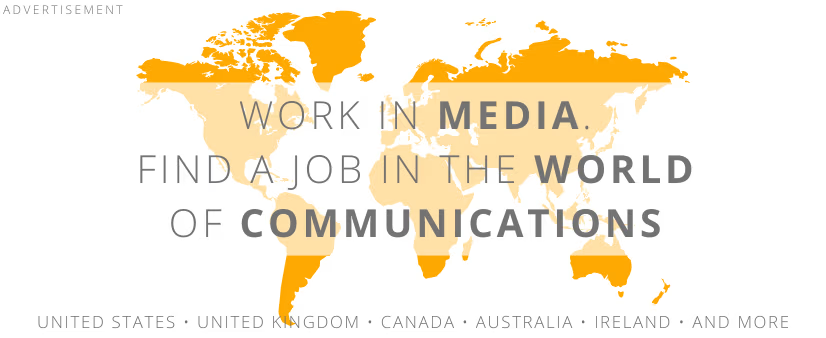 illustration: DALL-E
illustration: DALL-EDigital advertising has never been more threatened, but it also offers more ways to protect campaigns effectively. The latest Media Quality Report: 20th Edition, developed by analysts at Integral Ad Science, shows that 2024 brought both increased risk and proof that technology can fight it effectively. From over 280 billion digital interactions analyzed daily, three key findings emerge. Ad fraud is rising. The nature of brand risk is changing. Ad viewability is stabilizing, while a new currency is emerging attention.
Fraud gets smarter campaigns get more exposed
In 2024, the digital advertising world lost about 100 billion dollars due to fake impressions. As the report shows, those who act without protection face the biggest challenges. In campaigns not protected against fraud (so-called non-optimized), the level of fake traffic increased by 19% year over year, reaching a record 10.9%.
| Campaign type | Ad fraud (%) | YoY change |
|---|---|---|
| Optimized | 0.7% | -9.8% |
| Non-optimized | 10.9% | +19% |
On the other hand, campaigns that used protection tools kept fake traffic at a low and stable level, proving that investing in security pays off. Still, the number of unprotected campaigns is growing. Their global share increased from 2.2% in 2023 to 4.0% in 2024. In the Asia-Pacific region, as many as 6.8% of advertising efforts took place without any safety filters.
It is worth noting that unprotected campaigns were 15 times more likely to face fraud than optimized ones. This shows that the difference between both approaches is not just a matter of strategy. It is a clear financial and reputational advantage.
Less overall risk more hate and aggression in content
The second clear trend is a shift in the nature of brand risk. While the overall risk indicator fell globally to a record low of 1.5%, the share of content with hate speech, controversy, and offensive language increased alarmingly.
Growth of offensive content share in brand risk:
- +72% globally (2023-2024)
- 5.5% share in the USA (highest in 3 years)
- 15.8% share of hate speech in Ireland the highest in Europe
Although filtering tools are working better, the threats themselves are evolving. There is more controversial content that is hard to classify clearly. In the USA, where political tensions rose in 2024, hate speech and offensive comments increased, especially in the second half of the year. In Europe, after the intervention of the European Parliament, the hate speech rate dropped, showing that regulations can work.
Main changes in brand risk in 2024
- Overall brand risk down 10.6%
- Hate speech in EMEA rose to 10% in the first half of the year
- Hate speech in EMEA dropped in the second half after legislation
- Offensive language up 28% in the USA
From the advertiser`s point of view, it is not only about avoiding risky content but also about actively monitoring which threat types dominate. Consumers increasingly expect brands to act responsibly. More than half say they will stop using a brand if its ad appears next to hateful content.
Viewability has stabilized now attention matters
The third conclusion of the report addresses what truly makes an ad effective. For years, the key metric was viewability whether the ad appeared on the user`s screen and for how long. Now, marketers go further. What matters is not just if the ad showed up, but whether the viewer paid attention.
In 2024, ad viewability remained stable at 76.8%. However, this varied across digital environments.
| Environment | Viewability (%) | YoY change |
|---|---|---|
| Desktop video | 83.9% | +5.4 pp |
| Mobile web video | 79.6% | +2.4 pp |
| Mobile app display | 74.2% | -4.6 pp |
The rise in video environments stems from user behavior. More time is spent on video content, especially in social media and CTV platforms. Video ads blend smoothly into content streams, making them more acceptable and harder to skip.
On the other hand, in mobile apps where ads often cover large parts of the screen, users skip them more often by scrolling quickly to the main content. That may explain the drop in viewability in this segment.
Although viewability remains important, as many as 47% of marketers say that in 2025 they will focus more on measuring attention. That means analyzing not only impressions but also context, interaction, and even user facial expression. New technologies, including AI, allow better measurement of what truly engages audiences.
The Media Quality Report: 20th Edition clearly shows that digital ad quality today plays out on multiple levels. Protection against fraud, fighting brand risk, and precisely measuring engagement. Those who can combine all three elements come out ahead.
Media Quality Report: 20th Edition is based on analysis of more than 280 billion daily digital interactions in online advertising environments. The data comes from global campaigns monitored by IAS in 2024, covering various formats, devices, and regions, including both optimized and non-optimized campaigns. The full report is available for free at integralads.com.
COMMERCIAL BREAK
New articles in section Marketing and PR
Dance in the media mirror. Between culture, business and viral fame
KFi
Over 78,000 media pieces, 1.6 billion potential views, and 197,500 social media mentions-dance in Poland is no longer niche. With a combined media value exceeding PLN 800 million, it now outperforms MMA, handball, and hockey.
PR in Poland. Ranking of the largest public relations agencies 2025
KFi
The smallest teams often generate the most publications, and agencies outside Warsaw are increasingly capturing media attention. This unexpected distribution of power is one of the key findings from the 2025 PR Agency Ranking in Poland, developed by Widoczni and IMM.
Connected TV and borderless advertising. The ID5 report
KFi
Viewers are moving away from cable TV. And they are doing it en masse. Already 86% of Europeans watch content via Connected TV and global ad spend in this segment is set to double by 2028. The industry is undergoing a communication revolution.
See articles on a similar topic:
How to reduce food waste? Packaging design matters
KFi
Researchers from China have proven that visual packaging elements and consistent messaging can be effective tools in the fight against global food waste. They published research results showing that designers and marketers can make a real difference.
Poles do not forgive brands' mistakes. Armatis Customer Experience Index
Krzysztof Fiedorek
As many as 57.2% of Poles are willing to abandon a brand after one bad customer service experience. This result is similar to what was noted in the United States. Every third Polish customer prefers phone contact with a consultant, though over 13 percent now prefer chat.
When Will Every Advertisement Become... a Store? Omdia Forecasts
KFi
Global consumer spending online is growing at an unprecedented rate. By 2025, it will reach $4.4 trillion, with the US alone accounting for $1.4 trillion. The boundaries between advertising, entertainment, and commerce are blurring, ushering in a new era of digital consumption.
The future of search is now. How AI is reshaping brand visibility
KFi
AI Search and Share of Voice are no longer optional marketing metrics. They’re essential. Yet only 7% of Polish companies use AI. In the new search landscape, that’s nowhere near enough. Fall behind now, and your brand could simply... vanish from the internet.






























